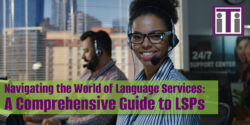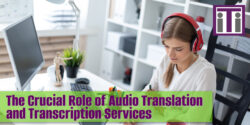
Many people have little to no experience in working with a sign language interpreter, so it can be difficult to prepare for a first time meeting.
Meetings with ASL (American Sign Language) speaking clients will run more smoothly and efficiently if you learn the best ways to communicate with an interpreter.
It’s more than a courtesy, and preparation should not be left until the last minute. Click here for all your options when it comes to communicating with deaf or hard of hearing individuals.
This post will cover several tips that will help you to work more efficiently with an ASL Interpreter.
What You Should Expect From An ASL Interpreter
ASL interpreters are professionals who work to abide by a code of ethics and professional conducts. As such, they are fluent in sign language and have at least an intermediary level of knowledge about deaf culture.
Interpreters keep all subject matter confidential and their goal is to remain objective; if professional standards are not upheld, ASL interpreters can be subjected to a grievance process.
Using An ASL Interpreter For The First Time
If you are using a sign language interpreter for the first time, here are a few special tips and suggestions to ease you into the process.
First, call the interpreter or interpreting agency to schedule the appointment (early notice is best as ASL interpreters are in high demand and are scheduled out weeks in advance), and if possible, meet about 10 minutes before the appointment so you have the opportunity to exchange any necessary information.
The deaf person will ultimately know what he or she will need to be prepared, and the interpreter may make suggestions to you on the most useful setup for the assignment.
Give reference materials to the interpreters well in advance so they will be able to review vocabulary and become familiar with the information, as they will be unable to look at any handouts and interpret at the same time.
Essentially, the more information the interpreter has on hand, the better prepared he or she will be and the smoother your appointment will go.
Everything You Need to Know About American Sign Language
Setting Up The Proper Seating Arrangements
In an ideal situation, the deaf person should be seated directly across from where the interpreter and hearing person are situated.
This arrangement helps the deaf individual to be able to see the hearing person speak, so they can view his or her body language.
If you are confined to a classroom or an auditorium, the deaf person should be seated in the front row. There may be situations where either the deaf person or the interpreter has preferences that differ from these tips.
Ultimately, proper seating arrangements are an important area of discussion before the meeting takes place.
Proper Etiquette Can Help To Receive Better Results
Keep this in mind:
In group situations, time is needed for the deaf participant to look to see who is talking before the comments are interpreted.
Also, you should avoid words such as “this” or “that” when discussing something being demonstrated. As the deaf person’s eyes are focused on the interpreter by the time they look at what you are referring to they will have missed it.
Instead, it’s most useful to attempt to identify objects by name. Additionally, if you are referencing written material or using visual aids, make sure you allow each member adequate time to review the written material before beginning the discussion. This allows time for a shift of attention from the visual aid to the interpreter.
Click here for more information on how to work with interpreters
iTi | Interpreters For The Deaf
We provide RID certified American Sign Language interpreters and we often use VRI or video remote interpreting (see our post on VRI) to provide help quickly without the delay traveling entails. People who are deaf or hard of hearing and organizations have embraced technology like VRI to help them communicate better and more efficient. Contact us to request a quote.
Would you like more information? Contact us visit the National Institute on Deafness and other Communication Disorders (NIDCD) website. NIDCD maintains a directory of organizations that provide information on the normal and disordered processes of hearing, balance, taste, smell, voice, speech, and language.






Comments are closed here.